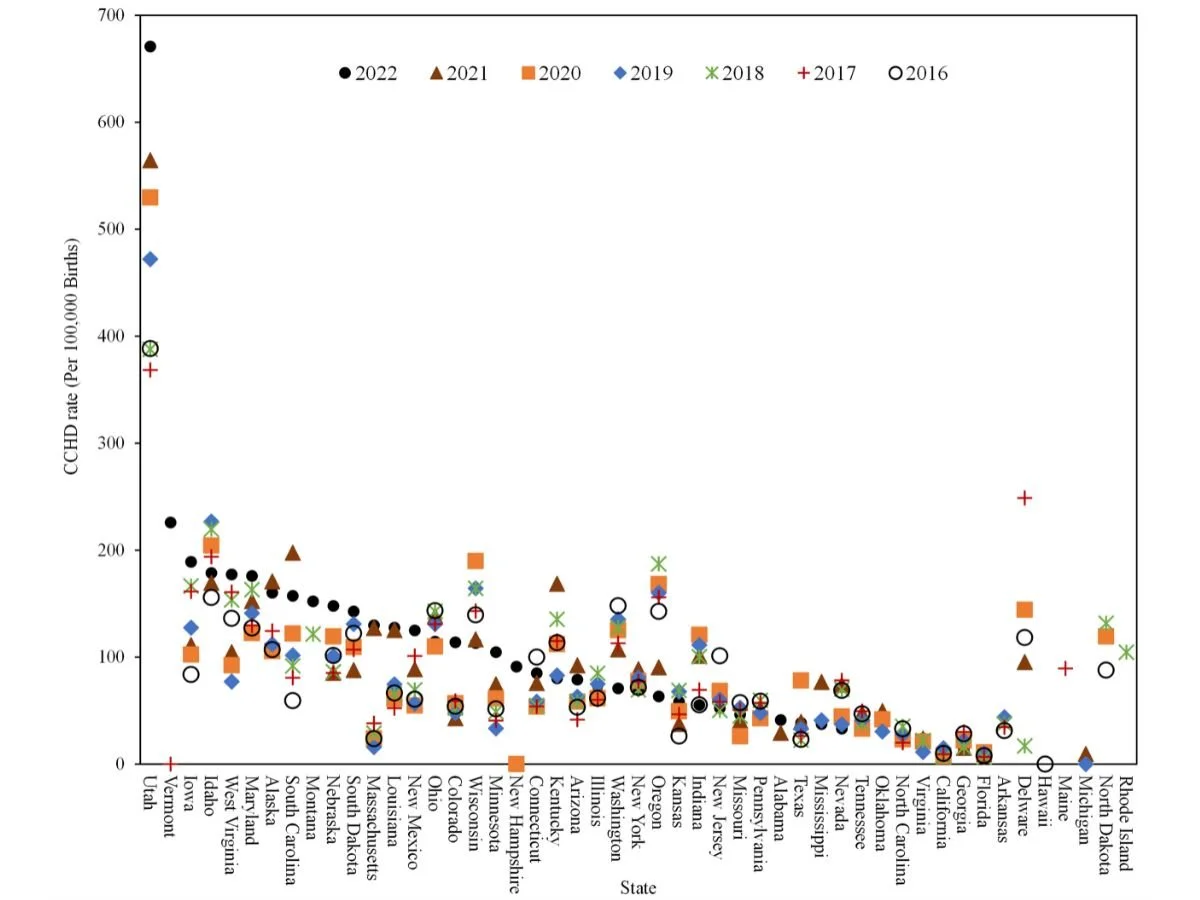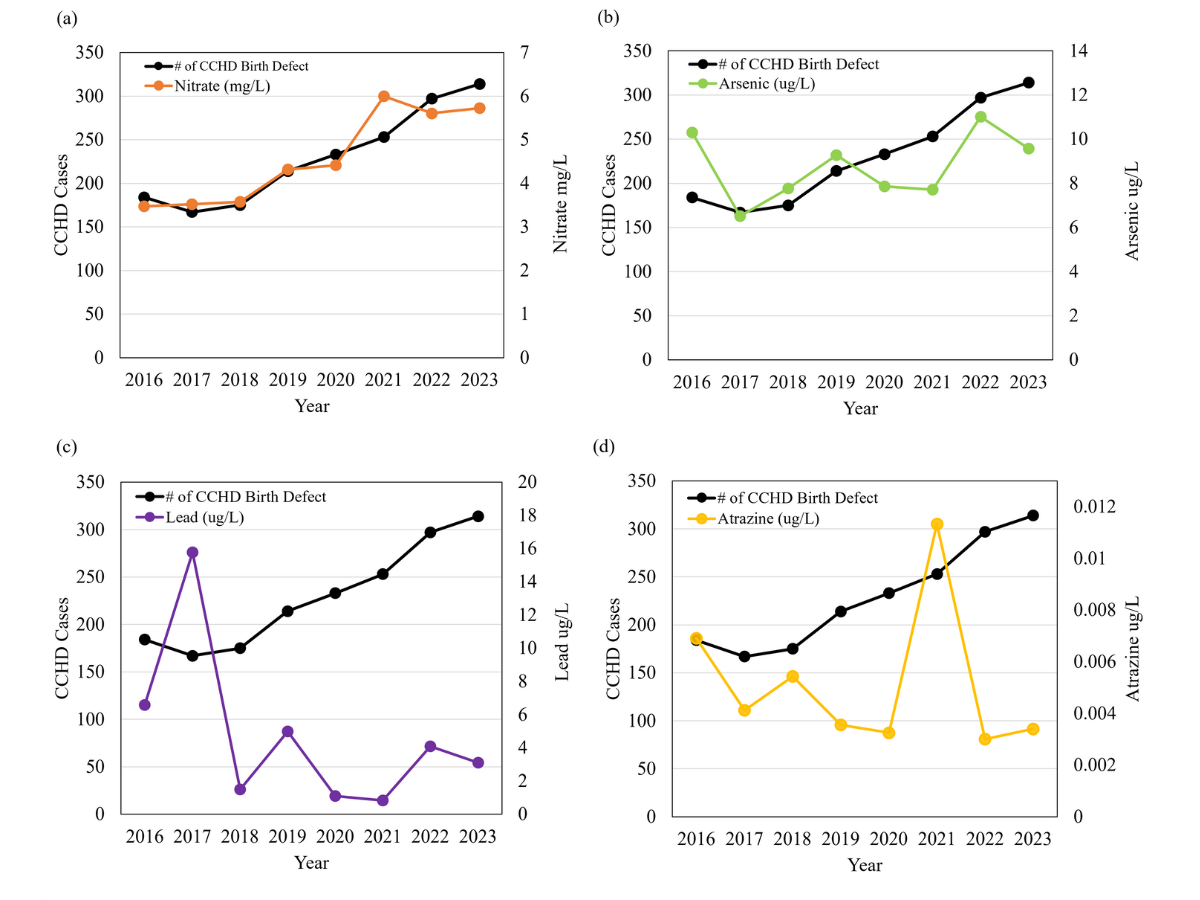Birth Defect Research
What is CCHD?
Cyanotic Congenital Heart Defects (CCHD) are one of the most common birth defects, and have a 25% mortality rate. CCHD are structural abnormalities in the heart and develop in weeks 3.5 to 8 of pregnancy, before most women recognize their pregnancy, and cannot be reversed by medical intervention.
Why CCHD is Important?
Cyanotic Congenital Heart Defects (CCHD) are one of the most common birth defects, and have a 25% mortality rate. CCHD are structural abnormalities in the heart and develop in weeks 3.5 to 8 of pregnancy, before most women recognize their pregnancy, and cannot be reversed by medical intervention.
CCHD accounts for 20% of birth defects and its rate increased 19% from 2016 to 2022
Research Objectives
1. Analyze trends of birth defects in US
2. Identify risk factors and their influence in CCHD rate increase from 2016 to 2022.
3. Analyze potential drinking water contaminant risk factors causing the high CCHD rate in Utah.
Trends of Birth Defects
Utah has the highest CCHD rate from 2016 to 2022, CCHD rate remains similar for most US states.
The CCHD rate in Utah increased 73% from 2016 to 2022.
Wu, F. & Hsu, W.H. The Impact of Maternal Risk Factors and Drinking Water Contaminants on Birth Defects. Journal of Student Research, 14, 1. https://doi.org/10.47611/jsrhs.v14i1.9100 (2025).
Influence of Maternal Risk Factors
Maternal age ≥ 35, BMI ≥30, smoking, pre-pregnancy diabetes, gestational diabetes, and Special Supplemental Nutrition Program for Women, Infants, and Children (WIC) show association with CCHD.
WIC has odds ratios smaller than 1, suggesting WIC is a protective factor for CCHD.
Pre-pregnancy diabetes has the highest odds ratios, ranging from 4.31 to 5.62, suggesting pre-pregnancy diabetes is one of the major risk factors for CCHD.
Wu, F. & Hsu, W.H. Trends and Associated Maternal Risk Factors for Cyanotic Congenital Heart Defects from 2016 to 2022 in the United States. National High School Journal of Science, https://nhsjsreports/biology (2025).
Influence of Drinking Water Contaminants
Nitrate concentration is positively correlated with CCHD with a p-value <0.001, suggesting high CCHD rates in Utah may be associated with nitrate concentration in drinking water.
Both drinking water nitrate concentration and CCHD rate show similar increasing trends in Utah.
Decreasing the nitrate concentration in drinking water may decrease the rate of CCHD.
Wu, F. & Hsu, W.H. The Impact of Maternal Risk Factors and Drinking Water Contaminants on Cyanotic Congenital Heart Defects. Journal of Emerging Investigators, to be published.




